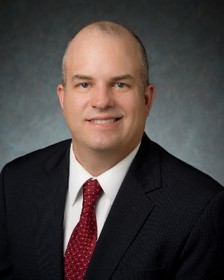In recent years, Congress has continued to push for changes to retirement accounts as they look for new ways to encourage retirement saving and create tax streams for the budget. Most recently, that includes the Secure 2.0 Act.
The Secure 2.0 Act was passed by Congress and signed by President Biden in the final days of 2022 as part of the 2023 Federal Omnibus Bill. The omnibus bill was more than 4,000 pages, included $1.7 billion in spending, and builds on the original Secure Act of 2019, which was the first major change to retirement plans in several years and opened the door for continued retirement plan discussions.
In the Secure 2.0 Act, there are dozens of changes that could affect retirement savings going forward. Here are some of the ones we believe are particularly important:
READ — Mapping Out Financial Success with Retirement Planning
Changes to Required Minimum Distributions (RMDs)
The 2019 Secure Act increased the RMD age from 70.5 to 72, which is the age retirement account owners are required to start taking distributions from retirement accounts. The Secure 2.0 Act took this another step and increased the RMD age to 73 years in 2023 and will eventually move this age to 75.
The Secure 2.0 Act also removes the RMD requirement for employer retirement accounts that allow Roth contributions. This essentially treats Roth dollars the same whether they are in an IRA or an employer-sponsored retirement account like a 401(k).
What this means for retirement savers:
By increasing the RMD age and removing the RMD requirement in employer retirement accounts, savers will be allowed to delay distributions and the corresponding taxes on these distributions. For retirement account owners who can afford to push back distributions, there may be opportunities to strategically plan out distributions during lower-income years prior to the start of RMDs.
529 Plan Transfers to Roth IRAs
For years, individuals have been using 529 plans to save for their children and grandchildren’s education expenses. Occasionally, they save too much and wonder what to do with the excess funds. Currently, distributions from 529 plans not used for educational expenses are subject to income tax and a 10% penalty. The Secure 2.0 Act allows savers to rollover these dollars to a Roth IRA for the benefit of the beneficiary.
What this means for 529 savers and beneficiaries:
If several conditions are followed, the 529 beneficiary (typically a child or grandchild) will be allowed to rollover up to $35,000 from the 529 to their Roth IRA during their lifetime.
READ — Choose Your Own Adventure: What’s Your Investment Path?
Increased Catch-up Contributions for Retirement Accounts
Catch-up contributions to retirement accounts have been around for decades to allow savers 50 years and older to put additional savings into their retirement accounts. Secure 2.0 Act made a few changes to this process.
What this means for retirement savers:
- In 2024, retirement savers in employer plans such as a 401(k) or 403(b), who are aged 60 to 63, will be allowed to increase their savings beyond the normal catch-up contribution.
- Under prior law, catch-up contribution limits were indexed to allow them to grow with inflation – except for IRA catch-up contributions. Secure 2.0 Act addressed this exception to allow inflation adjustments for the IRA catch-up limit as well, which means that the $1,000 catch-up contribution will be annually increased in $100 increments to match inflation.
Catch-up Contribution Change for High Earners in Employer Plans
Starting in 2024, catch up contributions will be handled differently for high-wage earners, who are defined as those making $145,000 or more with their employer in the prior year. This amount will be indexed to correspond to inflation.
What this means for high earners:
For high-income earners in employer retirement plans such as 401(k) and 403(b), catch-up contributions will be required to be made to the Roth portion of their plan. In the past, catch-up contributions have always been made in tax-deferred dollars for all employees.
The Roth IRA catch-up contribution rule is an attempt by the Secure 2.0 Act to increase tax revenues by ensuring contributions to Roth accounts are included in taxable income for the participant. It should be noted that not all employer plans allow Roth IRA contributions.
New Option for Surviving Spouse Beneficiaries
Currently, the surviving spouse has many options when they are named as the beneficiary. The Secure 2.0 Act adds an interesting new option to allow the surviving spouse to elect to be treated as the deceased retirement account owner for distribution options.
What this means for the spouse beneficiary:
This appears to allow the surviving spouse to delay distributions until the deceased participant/owner would have reached RMD age. This could enable strategic distributions during lower-income years and potentially save tax dollars.
The Bottom Line
These are just a few of the changes we believe to be the most relevant to retirement savers, but the Secure 2.0 Act has many other provisions that will affect retirement savings and will be important to monitor closely.
 Josh Hahn is a senior vice president and manager of trust administration at UMB Bank. He is responsible for providing leadership, supervision, coaching and long-term training for a team of trust professionals. He also provides leadership in connection with the fiduciary administration of all aspects of accounts, including probate estates, custody, agency, IRA and other assigned accounts. Hahn has been with UMB since 2000.
Josh Hahn is a senior vice president and manager of trust administration at UMB Bank. He is responsible for providing leadership, supervision, coaching and long-term training for a team of trust professionals. He also provides leadership in connection with the fiduciary administration of all aspects of accounts, including probate estates, custody, agency, IRA and other assigned accounts. Hahn has been with UMB since 2000.


 Ann Margaret Williams is the Director of Retirement Plan Services at Shelton Capital Management. A successful business owner and a veteran of the asset management industry, Ann Margaret earned her Master’s Degree from the London School of Economics and Political Science, and a Bachelor of Science degree in Business Administration from Villanova University
Ann Margaret Williams is the Director of Retirement Plan Services at Shelton Capital Management. A successful business owner and a veteran of the asset management industry, Ann Margaret earned her Master’s Degree from the London School of Economics and Political Science, and a Bachelor of Science degree in Business Administration from Villanova University